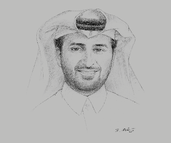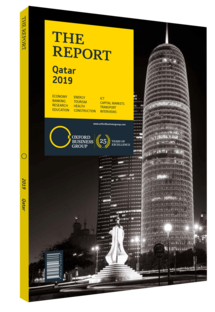Abdulla bin Abdulaziz bin Turki Al Subaie, Minister of Municipality and Environment: Interview

Interview: Abdulla bin Abdulaziz bin Turki Al Subaie
What impact will investment in infrastructure and Doha’s public transport network have on land-use planning and urban development?
ABDULLA BIN ABDULAZIZ BIN TURKI AL SUBAIE: Infrastructure development often has a huge impact on an area. This is particularly true for high capacity mass transit projects such as the Doha Metro and Lusail Tram. The results of similar projects have shown that residents can take advantage of improved accessibility and better quality of life, real estate demand increases and the pressure is eased from existing high-density areas. We expect that Doha will be no exception to this general rule.
We are working on extensions where we want to benefit from these effects. The Green Line extension will see increased demand along the entire route, especially along Barwa Commercial Avenue. The city will also see significantly better connectivity for several districts, including the Industrial Area. The Red Line North Extension will give people living in Al Khor a safer, faster and more reliable option for commuting to and from the Greater Doha Area.
With the 2022 FIFA World Cup in mind, how have projections of visitor traffic and commuter patterns been integrated into transport planning?
AL SUBAIE: Our transport planners work closely with the Supreme Committee, with the joint goal of integrating our projects seamlessly. Almost all visitors will have no access to a car, and so will be entirely reliant on public transport. The Supreme Committee has developed detailed models of transportation demand during the tournament, including trips to and from stadiums, Fan Fests and other journeys that the huge number of expected visitors may take. Information from these projections is integrated with our own models to simulate event traffic and its effects.
We have used the results from these models and simulations as the basis of our planning for the first phase of the Doha Metro and for determining the size of stations serving the stadiums. The Doha Metro and Lusail Tram will have a big effect on commuter patterns. These projects are just one part of the Transport Master Plan for Qatar managed by the Ministry of Transport and Communications (MoTC). Qatar Rail works very closely with the ministry so that our network is fully coordinated with this plan and its Qatar Strategic Transport Model. We use the model to predict passenger demand and overall footfall at individual stations, as well as to help us identify where we need to invest, therefore maximising connectivity and avoiding unnecessary broken journeys.
How will technology and electronic solutions, such as e-tickets, improve future coordination and increase passenger numbers?
AL SUBAIE: There is consensus within the transport industry that complicated and fragmented ticketing systems are one of the main obstacles to greater use of public transport. Again, Doha is no exception. The development of an integrated ticketing system, usable across different modes, is essential to increasing ridership and therefore directly linked to the success of our projects. Our team is working with the MoTC and the bus operator Mowasalat to offer an integrated solution for metro operations, using a single fare medium that can be used to pay for any other form of public transport.
Technology also has an important function for passenger information. Customers can expect dynamic displays at all of our stations, providing real time information about the status of the network and their journey. We are also developing smart mobile applications, which are now a common feature of public transport systems. These will ultimately include a “mobility-as-a-service” solution; you tell the app where you are and where you want to go and then the app provides a suggested route and alternatives, using real-time data about all modes of transport.
You have reached the limit of premium articles you can view for free.
Choose from the options below to purchase print or digital editions of our Reports. You can also purchase a website subscription giving you unlimited access to all of our Reports online for 12 months.
If you have already purchased this Report or have a website subscription, please login to continue.

